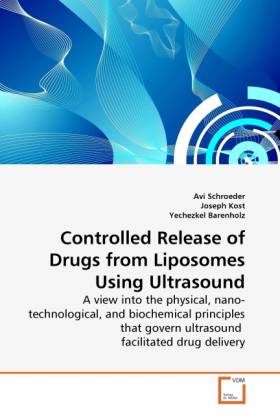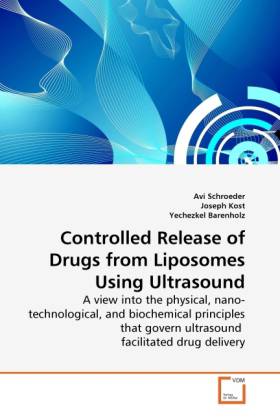
- Afhalen na 1 uur in een winkel met voorraad
- Gratis thuislevering in België vanaf € 30
- Ruim aanbod met 7 miljoen producten
- Afhalen na 1 uur in een winkel met voorraad
- Gratis thuislevering in België vanaf € 30
- Ruim aanbod met 7 miljoen producten
Zoeken
Controlled Release of Drugs from Liposomes Using Ultrasound
A view into the physical, nano-technological, and biochemical principles that govern ultrasound facilitated drug delivery
Avi Schroeder, Joseph Kost, Yechezkel Barenholz
Paperback | Engels
€ 48,45
+ 96 punten
Omschrijving
Liposomes, vesicles with one or more lipid bilayers entrapping an inner aqueous core, are widely used as drug delivery systems. When liposomes are smaller than 100 nanometers (nano liposomes) they have a unique capability of selectively accumulating in tumors and inflamed tissues. This phenomenon, known as the enhanced permeability and retention (EPR) effect, is related to the relatively high 'leakiness' of blood vessels in these diseased tissues. In this book, we present a novel approach for triggering drug release from liposomes at the target site, by use of a remote trigger - low frequency ultrasound. The book includes detailed descriptions of formulation, characterization, and in vivo performance of liposome-based drugs, with focus and insights into the biophysical phenomena governing ultrasound-induced liposomal drug release. Special attention is given to the principles needed to formulate ultrasound-responsive liposomes. The book is intended for people entering the field of liposome-based drug delivery as well as experienced scientists seeking fundamental understanding of the mechanism by which ultrasound interacts with lipid bilayers.
Specificaties
Betrokkenen
- Auteur(s):
- Uitgeverij:
Inhoud
- Aantal bladzijden:
- 112
- Taal:
- Engels
Eigenschappen
- Productcode (EAN):
- 9783639247282
- Verschijningsdatum:
- 13/07/2010
- Uitvoering:
- Paperback
- Formaat:
- Trade paperback (VS)
- Afmetingen:
- 152 mm x 229 mm
- Gewicht:
- 176 g

Alleen bij Standaard Boekhandel
+ 96 punten op je klantenkaart van Standaard Boekhandel
Beoordelingen
We publiceren alleen reviews die voldoen aan de voorwaarden voor reviews. Bekijk onze voorwaarden voor reviews.











